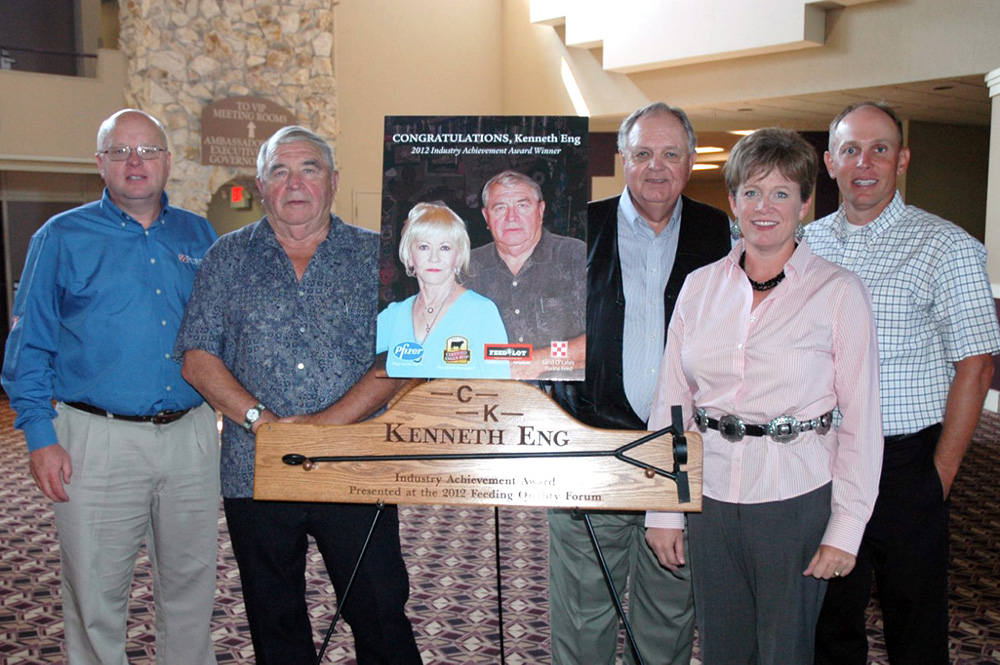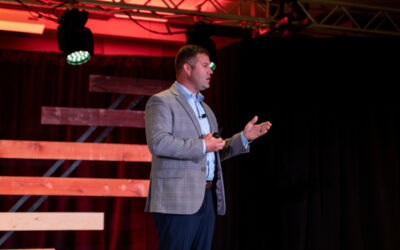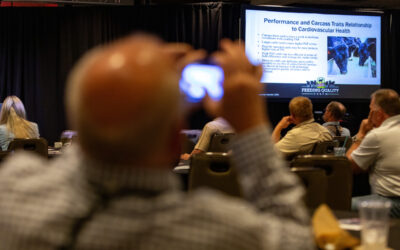
Feeding forum finds way forward
Cattle feeders face many challenges, but quality target remains best option, experts say
by Miranda Reiman
From drought and high feed prices to the shrinking cowherd and beef demand, there’s been a lot weighing on cattle feeders’ minds lately.
Producers gathered at last week’s Feeding Quality Forum in Grand Island, Neb., and Amarillo,Texas, to discuss these topics and get ideas for dealing with the ongoing industry challenges.
The seventh annual meetings were co-sponsored by Pfizer Animal Health, Purina Land O’Lakes, Certified Angus Beef LLC (CAB) and Feedlot Magazine.
Market analyst Dan Basse, of AgResource Company, started with a dose of reality.
“When I look at profitability, our biggest problem is the cost of feed going forward,” he said, calling USDA’s corn yield estimates high. “If we lose another billion bushels of corn, which I think is more and more likely. Somebody will have to go without.”
Yet, cattle feeders may have a slight advantage due to the poor quality of much of the crop, both in terms of low test weights and Aflatoxin problems. Cattle can use that more readily than other species and feeders may get some relief in terms of discounts.
“We are not in the camp that this corn crop is getting better,” Basse said. “The only good news we have for all of you is that this is really bad quality corn.”
Data from Professional Cattle Consultants continues to show that higher feed costs may be recouped, in part, by feeding cattle longer and selling on a carcass weight rather than a live price. Analyst Shawn Walter predicts those economics will drive carcass weights even higher, reinforcing a trend that’s been on the upswing since the 1960s.

“As we think about increased carcass weight, we assume once it gets past the feedlot that it’s all negative,” he said, but the packers and distributors feel the effects of smaller cow numbers, too.More pounds overall is a positive, and “as carcass weight increases, you see quality grade increases as well.
”It’s the really big outliers that create the “nightmares,” Walter said. “They slow the chain speed…and if they stop the chain, it can take a whole day’s profit out of a factory.”
Phil Bass, CAB meat scientist, demonstrated how those end-users are dealing with larger primals by fabricating a beef rib into cuts. Knife in hand, he walked the crowd through creative cuts like a rib filet and cucina steak that have helped mitigate the challenges of portion cutting in heavier carcasses.
“It takes a little more craftiness, it takes a little more experience, a little more time, but the value is there,” he said. “It’s a big Titanic we’re going to have to turn if we’re going to make this catch on.”
CAB works with its partners on education and marketing with these new cutting styles.
“We’re using what you folks are producing and try to make that connection and that balancing act, because if they don’t eat it you’re out of business,” Bass said. “Carcasses aren’t getting any smaller.”
High final weights will be a main factor keeping beef tonnage up.
Mike Sands, with Informa Economics, said, “The total size of the cattle industry has been shrinking and shrinking rather abruptly for the last couple of years.”
January 2012 numbers stood at 90.8 million cattle.
“And that’s not the bottom,” he said. “If we started today, the earliest I see this inventory turning around is 2015.”
For cattle feeders, that means there will be fewer of them, calves will cost more and managing risk is a must.
“The margin operator is going to have to run a pretty sharp pencil,” Sands said.There is no room for waste at any level of the food business, and that includes the packing plant forward.
Brad Morgan, Pfizer meat scientist, said in the U.S. annually we throw away 242 pounds of food per person, or about 1,400 calories per person per day.
Looking to feed 9 billion people by 2050, he said, “We’re going to have to come up with technology to double this food production,” he said. “But we’ve also got to become less wasteful.”
Lunch featured the 2012 Industry Achievement Award honoree, Kenneth Eng. The longtime feedlot consultant gave remarks and received a customized branding iron.
“Ken was an early pioneer in feedlot nutrition,” said Larry Corah, CAB vice president. “And he recognized the importance of giving back.”
More information will be available in the weeks ahead at www.cabcattle.com.
You may also like
Consumer Demand, Power of Quality
Demand for high-quality beef persists. But with that demand comes challenges. From tight cattle supplies to higher costs and increasing pressure on retailers to deliver a consistent eating experience, the pressure is on. David O’Diam, CAB VP of retail, addressed the current retail beef environment, highlighting both opportunities and challenges in today’s marketplace.
Data-Driven Progress and Partnerships
Discussions at Feeding Quality Forum reaffirmed the industry’s commitment to quality, transparency and innovation. With record Prime rates and strong consumer demand, producers who invest in genetics, health and relationships are positioned to drive progress and capture premiums.
Better Cattle Bring Opportunity
Cattle keep getting better, but that doesn’t mean producers should slow down progress. That’s what attendees took home from the 2025 Feeding Quality Forum. It’s call to action for the entire beef industry. Better cattle, yet new and old challenges for each segment.



